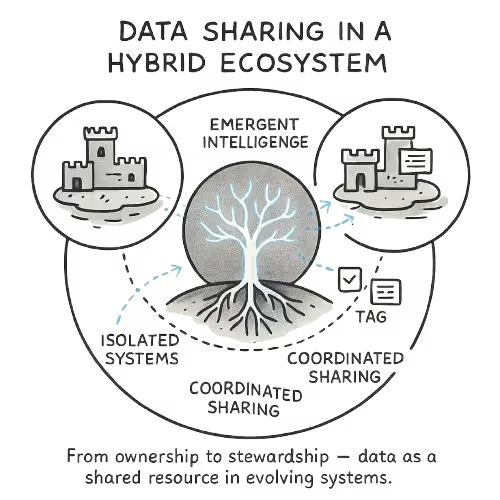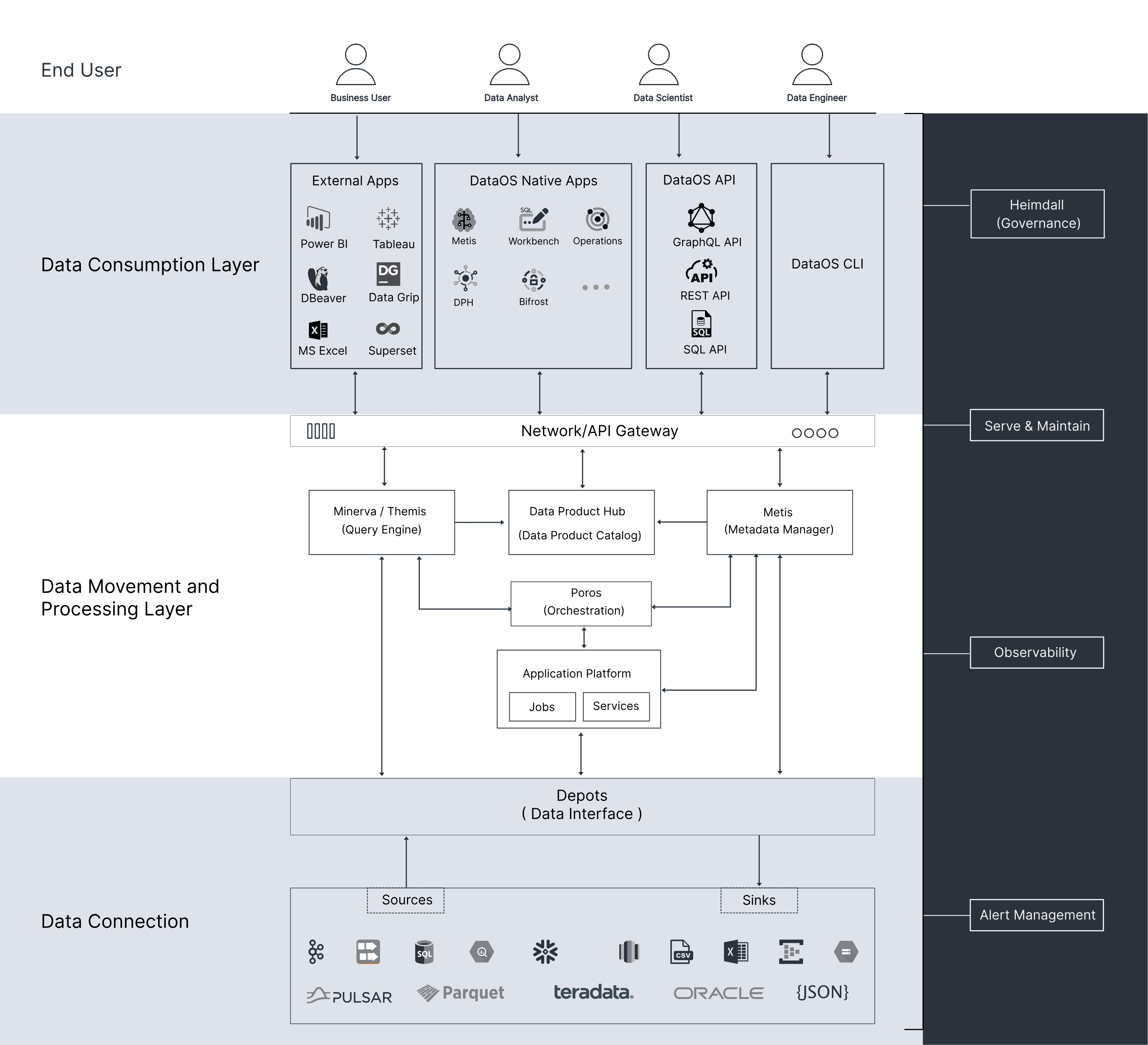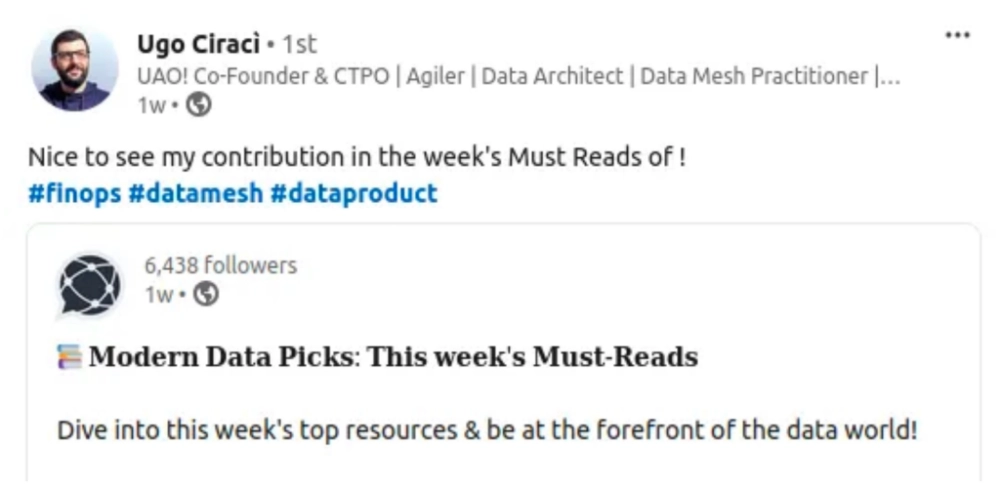
TL;DR
The Rise of Agentic Systems for Enterprises and the Challenge of Scaling Them
Enterprise AI is quickly becoming the new reality, making agents such as copilots, customer service bots, and autonomous workflows essential components of digital operations. These AI agents signify a giant leap forward when it comes to automation, with capabilities to interact, reason, and execute various activities across systems.
As models continue improving, organisations face the challenge of securing scalable AI agents, but this is possible only when there is more in store than just great models, which is contextual, trustworthy, and discoverable data.
A lot of enterprises have huge volumes of data available for use, but most of that data is fragmented, siloed, or ineffectively documented. Without proper context or lineage, AI agents struggle to understand the data they work on, resulting in hallucinations, disjointed automation, and governance risks.

As drivers of agentic intelligence, this is where data discovery and catalogs make a strong case for themselves. Enterprise data catalogs enable AI agents to discover the correct data by making assets searchable, visible, and also explainable, so that each decision is backed with confidence.
Leading to increased productivity, data catalogs also help in ensuring scalability for enterprise AI, where multiple agents can work across domains autonomously while also staying true to the foundations of data.
What are AI Agents and Why are They Business Critical?
Agentic systems, also known as AI agents, refer to intelligent entities designed in a way to perceive, act, and behave as users or systems to achieve specific objectives. What sets these agents apart is their adaptability, context awareness, and inclination towards the final goal. This is the complete opposite when compared to single-use chatbots that work along predefined scripts.
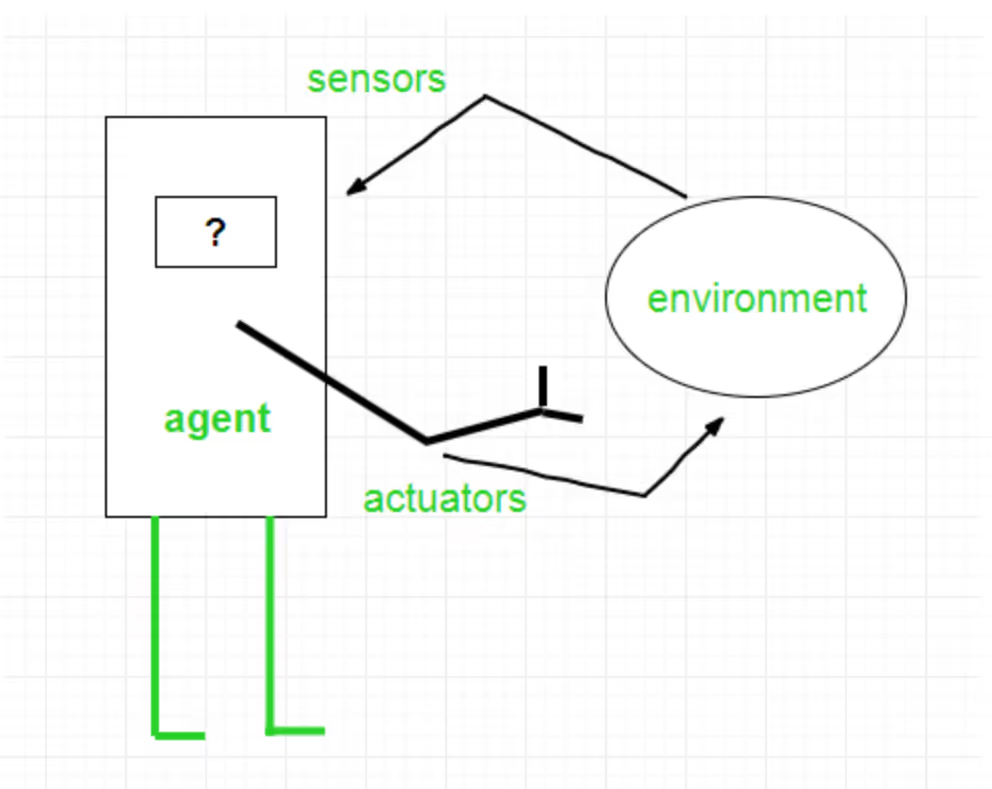
There have been a lot of definitions for AI agents, and as we defined them, some of the accurate ones are provided below:
“An Artificial Intelligence (AI) agent is a system that autonomously performs tasks by designing workflows with available tools.” - IBM
“An Artificial Intelligence (AI) agent is a software program that can interact with its environment, collect data, and use the data to perform self-determined tasks to meet predetermined goals. Humans set goals, but an AI agent independently chooses the best actions it needs to perform to achieve those goals.” ~ Amazon
In the complex business dynamic, AI agents are proving to be mission-critical with a dual approach:
- Internally, these agents work as copilots, where they support teams with automating tasks, summarising data, and helping in decision support throughout different organisational functions such as analytics, HR, and finance.
- On the other hand, externally, they drive intelligent customer-targeted agents to take care of customer queries, tailor engagement as needed, and solve any issues with minimal human involvement.
As enterprises scale, AI agents are not just transforming how work is done, but what, or who, is actually doing that work.
Why AI Agents Struggle to Deliver ROI in Enterprises?
Gartner estimates that 40% of projects involving AI agents will get cancelled by 2027 due to a lack of clarity on business value and increasing costs. There’s nothing wrong with the models, but the reason will be poor access to AI-ready data.
Interpreting the information correctly is a challenge for most organisations as the data is scattered across multiple departments, domains, and tools. When clean, trustworthy, and well-documented data is unavailable, AI agents throw themselves into the dark.
The result?
Compliance risks, hallucinations, and broken workflows simply because there is no lineage, quality, and context.
Adding to these woes is the fact that enterprise teams constantly work in silos, doubling down on narrow Proof of Concepts (PoCs) that may work in isolation, but are not reflective of collective success. Gartner echoes this, predicting that 30% of GenAI projects will get abandoned by 2025 at the PoC stage.
As far as missing out on unlocking ROI is concerned, it has nothing to do with model performance. Still, it’s the absence of a unified data platform, robust with governance and discovery layers. These layers are foundational, and in their absence, it becomes difficult for agents to have reliable interactions with data ecosystems.
Moving from PoC to production and unlocking real value, there is a need to invest in a data product platform that makes data contextual, discoverable, and trustworthy.
Data Discovery and Catalogs: The Missing Link for AI Agents
If AI agents are to work effectively in complex enterprise environments, they would need something more than API access. The data they interact with needs to have clarity, context, and control, and this is where data discovery and catalogs become fundamental to success.
The multi-domain ecosystems where AI copilots interact usually don’t guarantee visibility into details such as where the data comes from, its context, its expected users, as well as how it should be handled. These agents, in such situations, face the risk of poor decision-making and hallucinated outputs, both of which are significant concerns in regulated industries.
This is where data catalogs come in, acting as a connective bridge by ensuring stability to data chaos through a metadata-focused view of the overall data landscape.
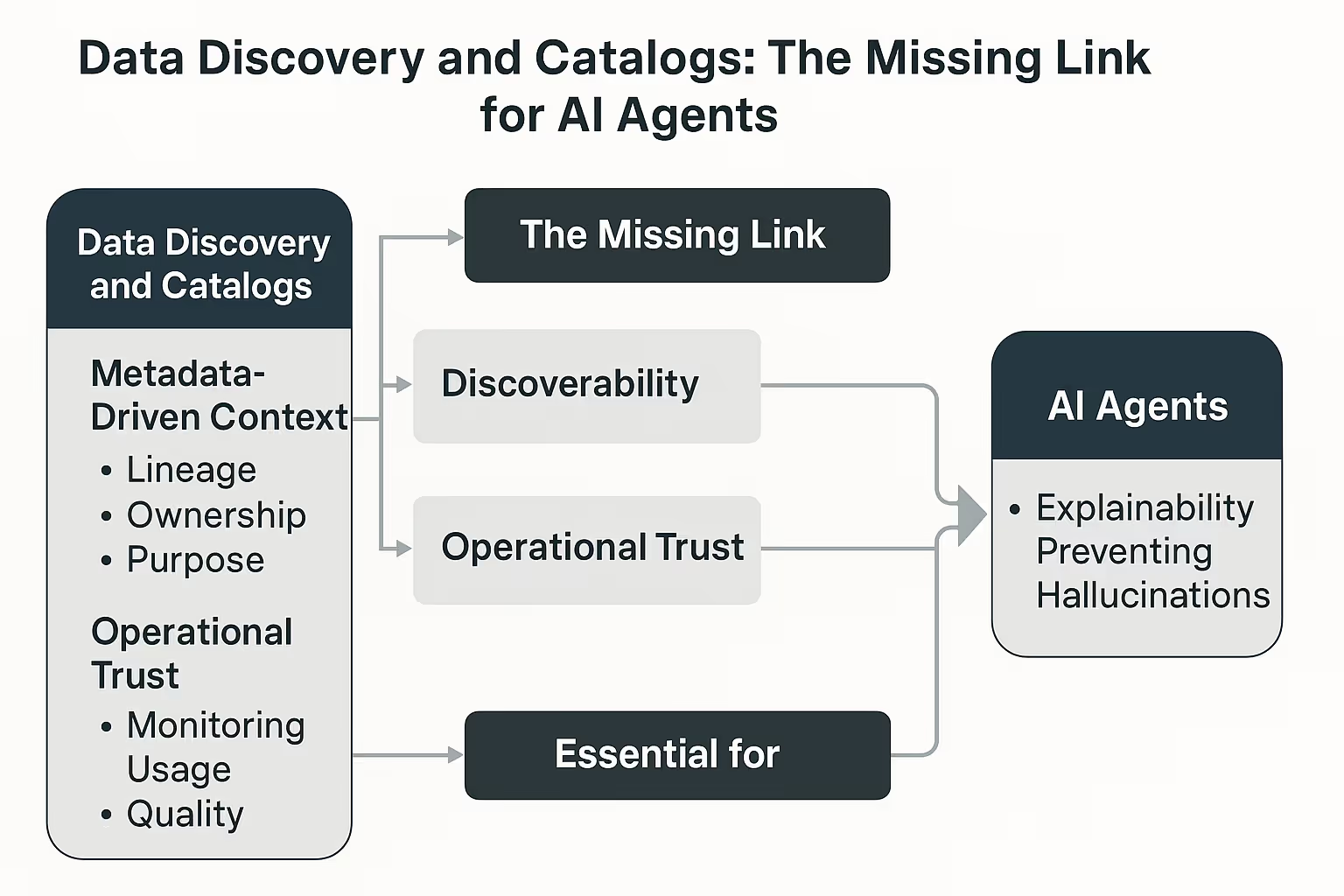
A few crucial things that modern data catalogs offer are:
- Discoverability through reusable data products, where agents can find the correct set of data when needed.
- Context through lineage, documentation, and ownership helps agents with accurate data interpretation.
- Operational trust with embedded signals such as quality metrics, SLAs, and usage patterns.
The Role of a Data Product Platform in Accelerating AI Agents
How to scale AI agents?
Once an organisation starts experimenting with AI agents, this question is unavoidable. Scaling isn’t just a matter of upgrading tools or adding more compute; it’s about creating a repeatable, trusted, and governed environment where AI agents can operate with confidence.
A data product platform delivers that environment by embedding context, discovery, and governance directly into the AI ecosystem. Context ensures that agents work with data that is accurate, meaningful, and understood in both business and technical terms. Discovery gives agents the ability to locate the right datasets, features, and models without navigating silos. Governance enforces secure, role-appropriate access and compliance without slowing delivery.
The Productised Approach
The difference lies in the productised foundation. By treating data as governed, composable products, the platform enables safe reuse across agent workflows and domains. A semantic layer standardises business definitions so that every AI agent, no matter its function, interprets concepts the same way. This ensures consistent reasoning and decision-making across the enterprise.
For LLM-powered agents, this is critical. A centralised, unified repository allows models to access a single source of truth, removing ambiguity and ensuring they interpret enterprise data correctly. No more re-defining terms for each project or agent, context is embedded once, then reused everywhere.
Operational control is built-in. Role-based access ensures agents only see what they’re authorised to use. Observability tools monitor usage patterns, data quality, and potential bias, giving teams confidence in scaling AI agents responsibly.
When context, discovery, and governance come together in a single, scalable platform, the jump from pilot agents to enterprise-wide deployment becomes a controlled, predictable process. AI agents evolve from isolated experiments to impactful contributors to business value, accelerating decisions, streamlining operations, and creating measurable outcomes.
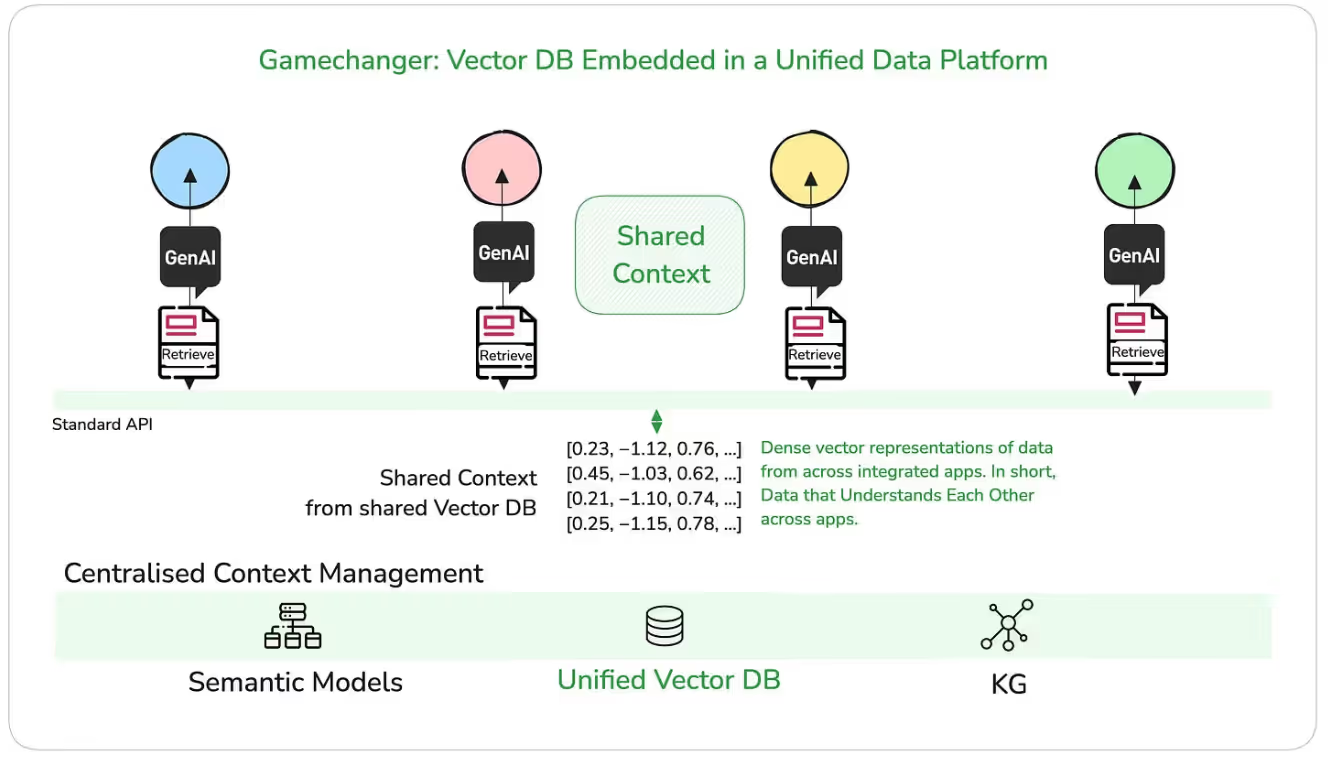
💡 Related Reads:
How AI Agents and Data Products Work Together to Support Cross Domain Queries & Decisions for Businesses
Implementing Data Discovery for AI Agents: Best Practices
Putting data discovery measures in place for AI agents is not just a technical activity, but a move to secure scalable, trustworthy AI systems.
Here are some of the best practices to keep in mind:
Cross-functional Ownership
Involve multiple teams like data, security, engineering, and business, for defining and maintaining data context collaboratively. When applied in AI initiatives, cross-functional AI teams ensure that model development, deployment, and governance benefit from diverse expertise and shared accountability.
Metadata-first Approach
Metadata management is identified as a top priority for good data practices. Data cataloging should not be an optional approach, but should be fundamental for enabling trusted AI agent behaviour.
AI Governance and Compliance Frameworks
Make sure that data catalogs support traceability, auditability, as well as other regulatory requirements for AI-based systems.
Designing for Composability and Reuse
Structure data products in a manner that they can be reused across different agentic systems and workflows.
Data Observability and Telemetry into Data Products
Keep a track on how AI agents use data products, while also monitoring quality signals, usage patterns, and feedback loops for constant improvement.
From PoC to Production: Building AI Agents as Products
Many agentic systems get stuck at the Proof of Concept (PoC) stage and never move further. This doesn’t happen because the potential is lacking, but because the data product approach is missing. To open up real value, AI agents need to be treated as products, built for scale, measurable impact, and usability.
It should begin with a set of clearly defined KPIs, such as a reduction in response times, ensuring better decision accuracy, or even increasing process automation. AI agents, with such metrics, become key drivers of ROI.
Embedding feedback loops with observability layers and data catalogs is the next genuine step. When monitoring is conducted about what data agents are using, it becomes easy to identify the areas where breakdowns occur. The results are reliable and consistent iterations in dynamic environments.
A great example will be all enterprises that began with one high-impact use case and then scaled it with a product mindset and shared data foundation. In other words, their success was repeatable by design.
Conclusion: Data Discovery is the Multiplier for AI Agents
Data discovery is the ultimate multiplier to scale AI agents. Data catalogs, when embedded in a data product platform, create an essential foundation for agentic AI, where each bit of data is governed, contextual, and reusable.
That should be the ideal AI adoption strategy, where data is truly discoverable, usable, and trustworthy.
Frequently Asked Questions (FAQs)
1. How do data catalogs support AI agents?
Data catalogs offer lineage, observability, and metadata, essential attributes to help agents discover, understand, and trust data for their decisions.
2. Why do AI agents fail to ensure scaling in enterprises?
This happens because AI agents don’t have access to contextual, trusted, and AI-ready data.
3. What exactly is the role of a data product platform in AI adoption?
A data product platform drives a robust AI adoption strategy by enabling governed, reusable, and semantic data products so that agents are able to scale seamlessly across multiple domains and use cases.
Join the Global Community of 10K+ Data Product Leaders, Practitioners, and Customers!
Connect with a global community of data experts to share and learn about data products, data platforms, and all things modern data! Subscribe to moderndata101.com for a host of other resources on Data Product management and more!
.avif)
A few highlights from ModernData101.com
📒 A Customisable Copy of the Data Product Playbook ↗️
🎬 Tune in to the Weekly Newsletter from Industry Experts ↗️
♼ Quarterly State of Data Products ↗️
🗞️ A Dedicated Feed for All Things Data ↗️
📖 End-to-End Modules with Actionable Insights ↗️
*Managed by the team at Modern
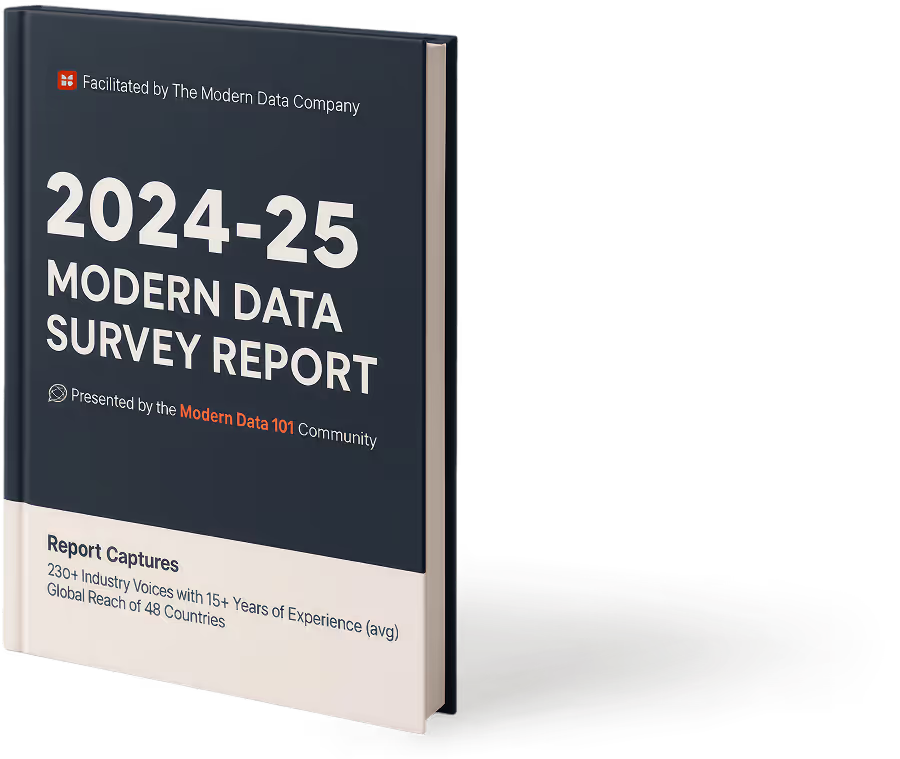
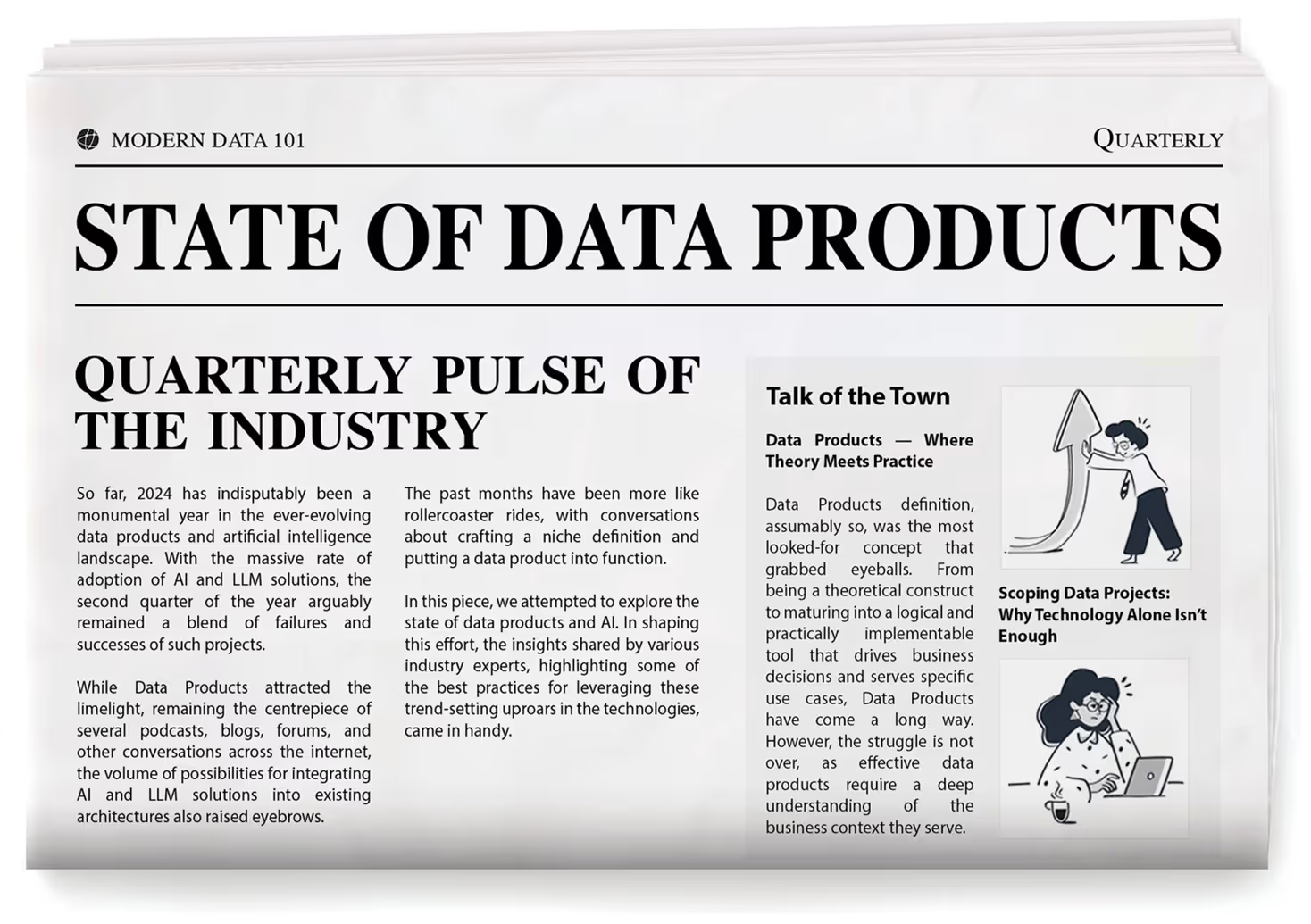

Author Connect 🖋️

Simran Singh Arora

Simran is a content marketing & SEO specialist.
Simran is a content marketing & SEO specialist.

More about
Accelerating Development of Enterprise AI Agents with Data Discovery and Catalogs
Checkout our

Community resources
and

Related articles




